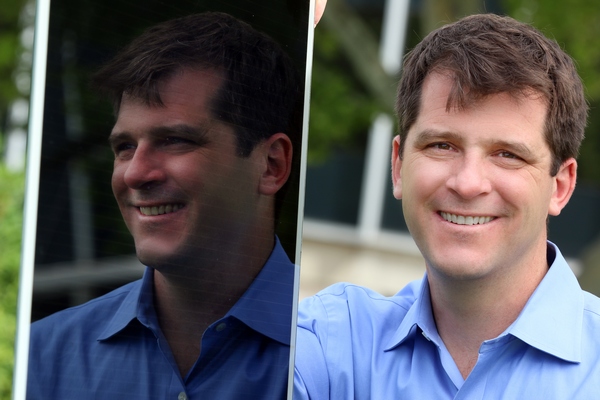University of Utah materials science and engineering associate professor Mike Scarpulla wants to shed light on semiconductors — literally.
Scarpulla and senior scientist Kirstin Alberi of the National Renewable Energy Laboratory in Golden, Colorado, have developed a theory that adding light during the manufacturing of semiconductors — the materials that make up the essential parts of computer chips, solar cells and light emitting diodes (LEDs) — can reduce defects and potentially make more efficient solar cells or brighter LEDs. The role of light in semiconductor manufacturing may help explain many puzzling differences between processing methods as well as unlock the potential of materials that could not be used previously.
Scarpulla and Alberi reported their findings in a paper titled “Suppression of Compensating Native Defect Formation During Semiconductor Processing Via Excess Carriers,” published June 16 in the journal, Scientific Reports. The research was funded by grants from the U.S. Department of Energy Office of Basic Energy Sciences.
 |
|
University of Utah materials science and engineering associate professor Mike Scarpulla stands next to a solar panel made of the compound semiconductor, cadmium telluride. Scarpulla along with Kirstin Alberi of the National Renewable Energy Laboratory have developed a theory that adding light during the manufacturing of semiconductors can reduce defects in the materials, leading to more efficient solar cells and better LEDs.(Photo credit of Dan Hixson/University of Utah College of Engineering) |
Semiconductors are pure materials used to produce electronic components such as computer chips, solar cells, radios used in cellphones or LEDs. The theory developed by Scarpulla and Alberi applies to all semiconductors but is most exciting for compound semiconductors — such as gallium arsenide (GaAs), cadmium telluride (CdTe), or gallium nitride (GaN) — that are produced by combining two or more elements from the periodic table. GaAs is used in microwave radios in cellphones, CdTe in solar panels, and GaN in LED light bulbs.
The fact that compound semiconductors require more than one chemical element make them susceptible to defects in the material at an atomic scale, says Scarpulla, who also is a University of Utah electrical and computer engineering associate professor.
“Defects produce lots of effects like difficulty in controlling the conductivity of the material, difficulty in being able to turn sunlight into electricity efficiently in the case of solar cells or difficulty in emitting light efficiently in the case of LEDs,” he says.
For nearly a century, researchers have usually assumed that the numbers of these defects in semiconductors were uniquely defined by the temperature and pressure during processing. “We worked out a complete theory that couples light into that problem,” Scarpulla says.
The team discovered that if you add light while firing the material in a furnace at high temperatures, the light generates extra electrons that can change the composition of the material.
“We ran simulations of what happens,” Scarpulla says. “If you put a piece of a semiconductor in a furnace in the dark, you would get one set of properties from it. But when you shine light on it in the furnace, it turns out you suppress these more problematic defects. We think it may allow us to get around some tricky problems with certain materials that have prevented their use for decades. The exciting work is in the future though — actually testing these predictions to make better devices.”
The team is working to apply their theory to as many semiconductors as possible and testing the real world results. For example, the team believes this could improve the efficiency of solar panels that use thin films of cadmium telluride and even those made from silicon.
“It’s really cool to be working on this fundamental problem in semiconductors,” says Scarpulla. “Most of the ideas were worked out decades ago, so it is really exciting to be able to make a contribution to something fundamental. It feels like we have shined light onto a new path and we don’t know how far it will take us.”





 CN
TW
EN
CN
TW
EN






